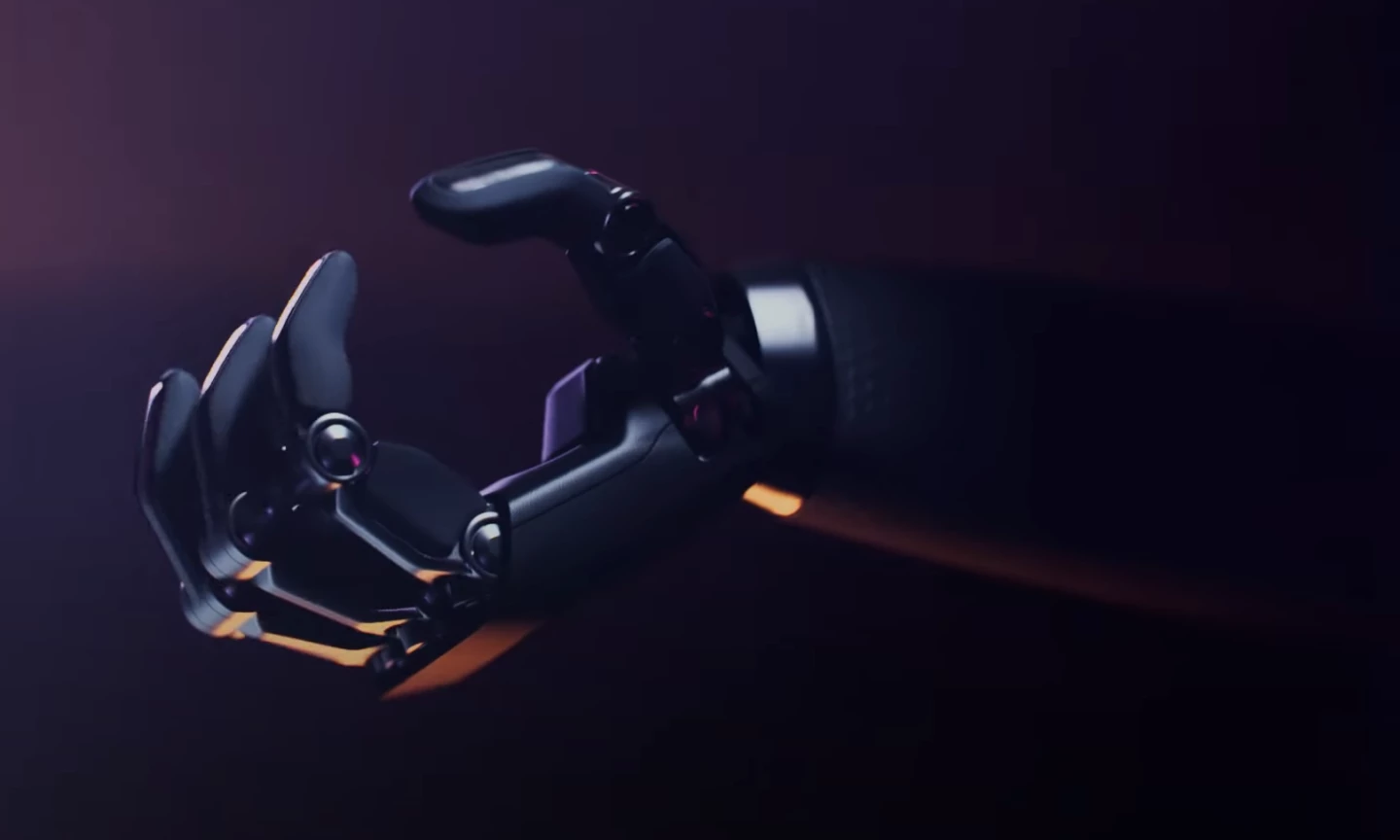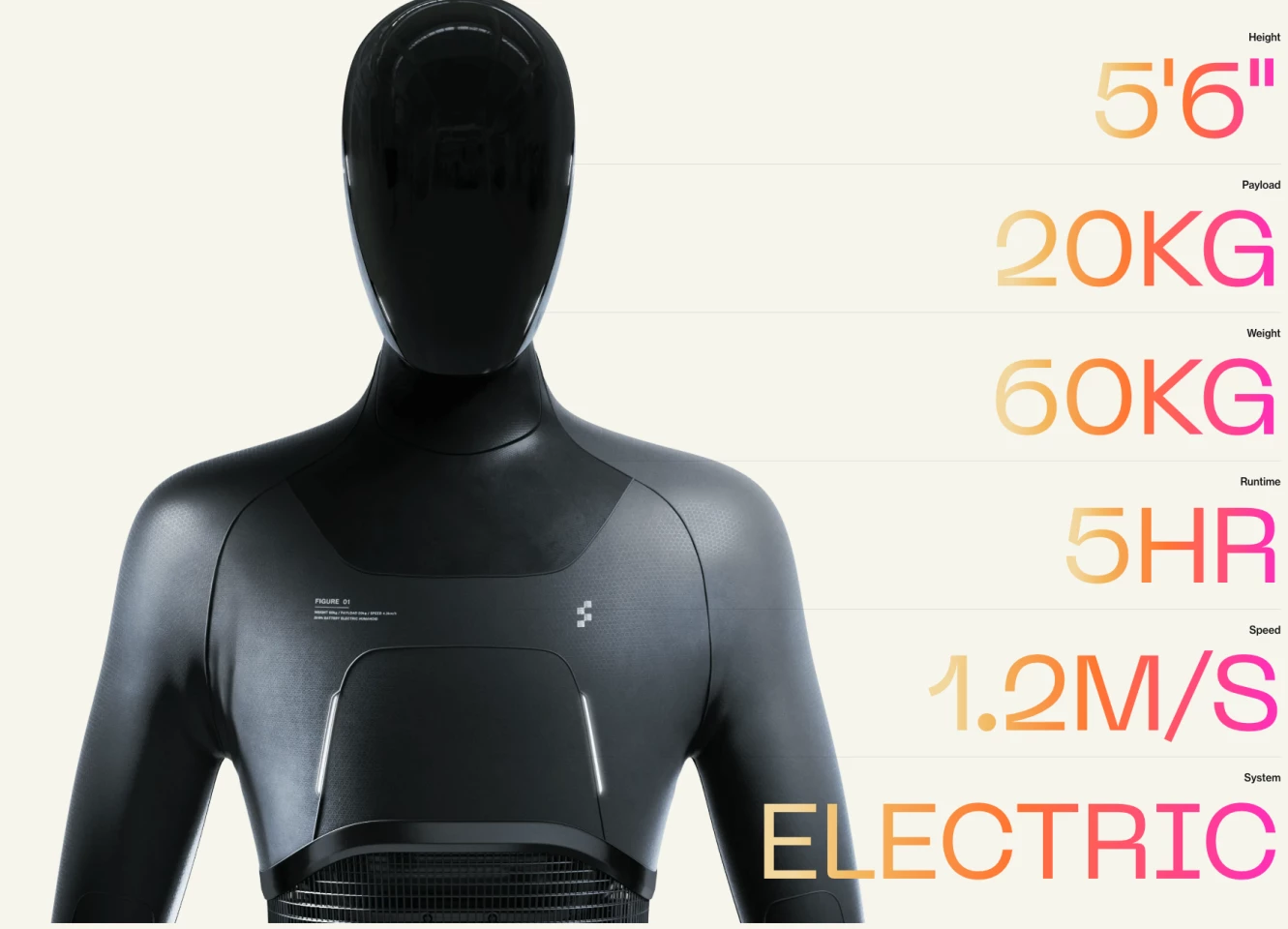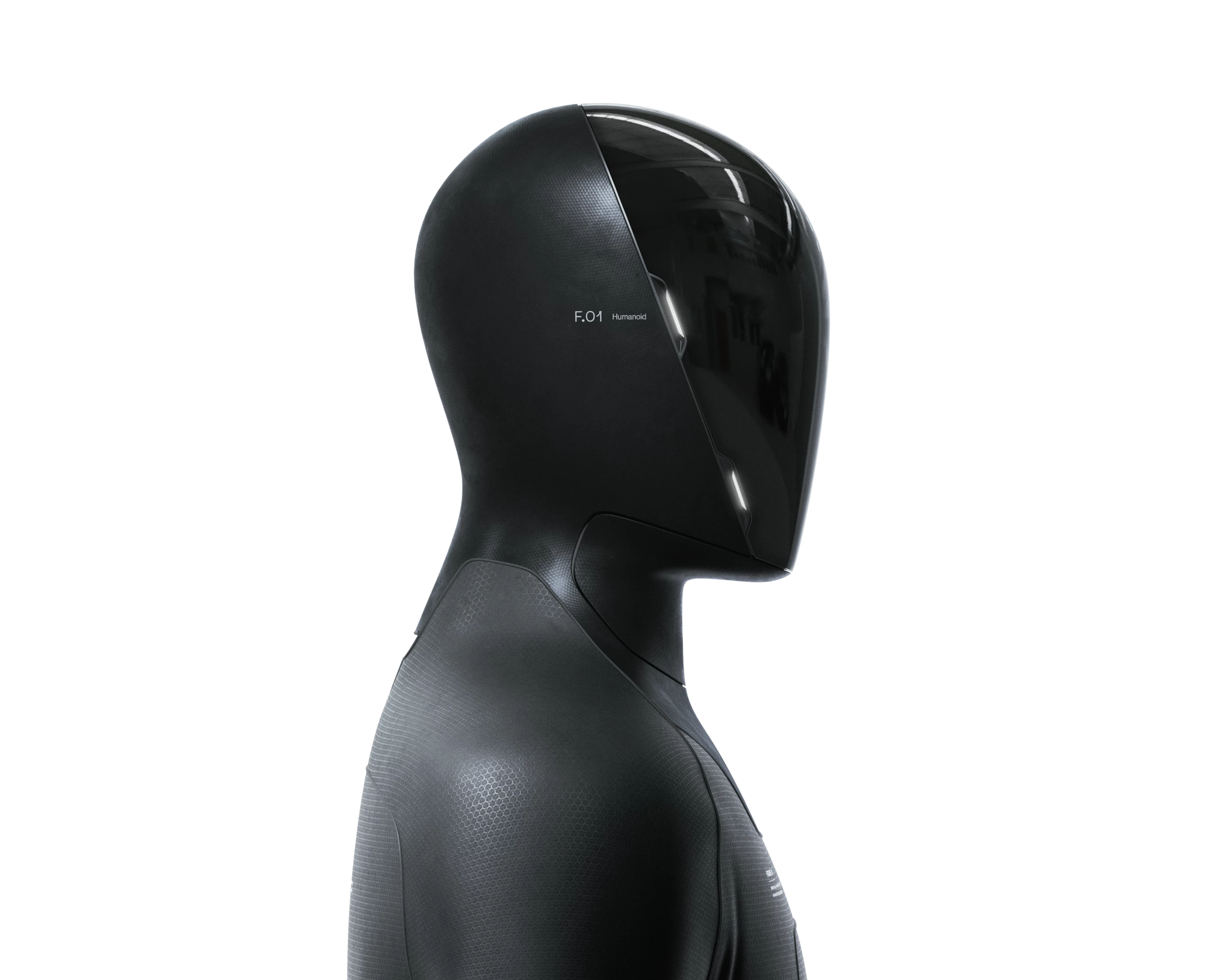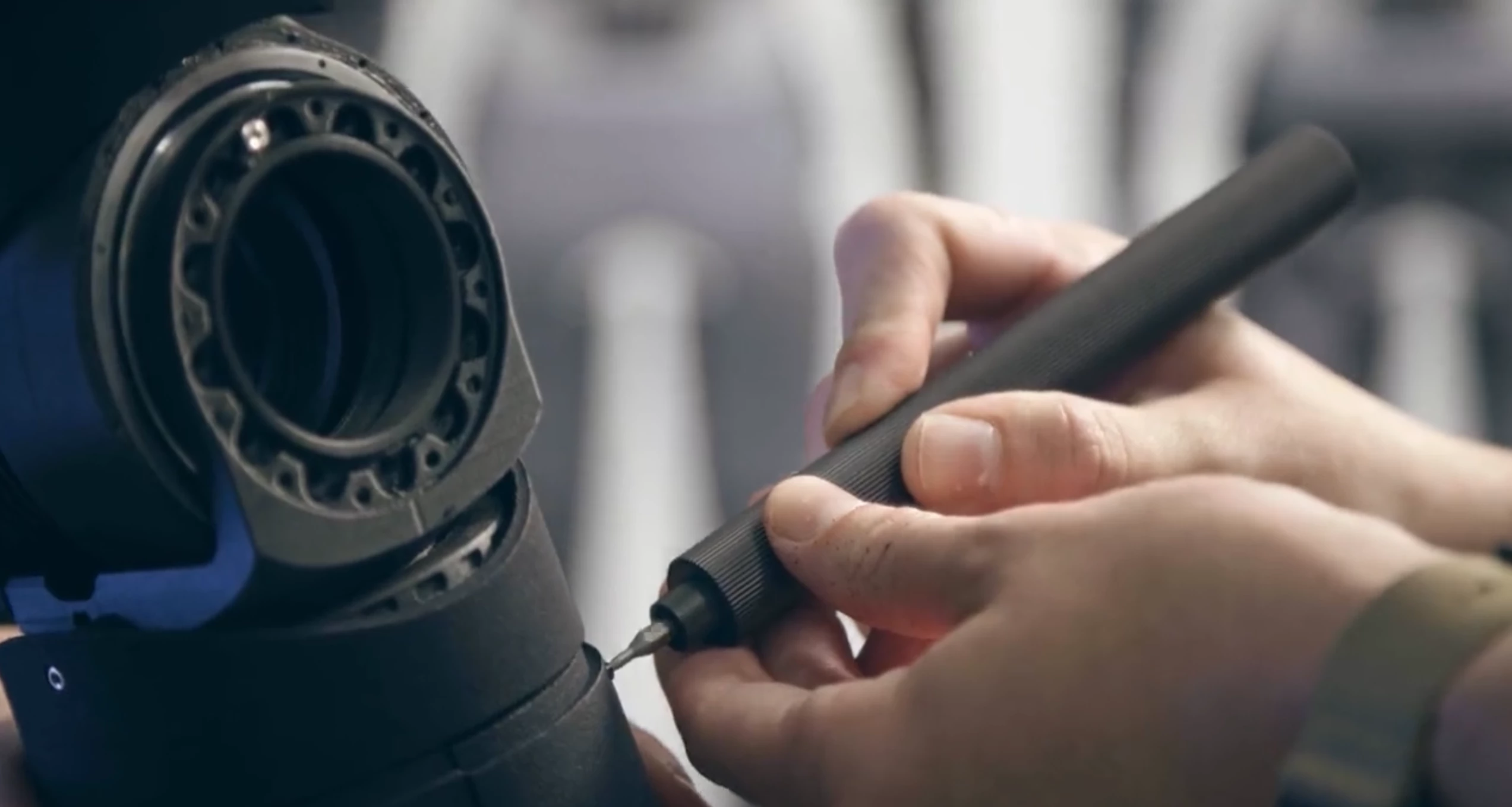After coming into nine-figure wealth from the sale of his first company Vettery, then founding eVTOL company Archer in 2018 and taking it public on the NYSE at a US$2.7 billion valuation, Adcock wanted a new and bigger challenge to chew on.
So he founded Figure in 2022, determined to build some of the most useful machines in history, with a potential payoff of mythical proportions.
Watching the convergence of AI, robotics, batteries and motors, he felt the time was right to start work on humanoid robot workers. Not research-based projects like Boston Dynamics is working on with its Atlas robot, but general-purpose robot laborers as a commercial commodity, ready to get out and work next to humans in a range of employment situations.
A year later, Figure's prototype humanoid robots are already walking around the lab. By the end of next year, the plan is to have them doing useful work on-site, and potentially on-site at customer warehouses.
Figure is now 60 people!
— Brett Adcock (@adcock_brett) September 13, 2023
Here are the backgrounds of the last few hires:
→ Google Deepmind (AI)
→ Dexterity (AI)
→ Boston Dynamics (Controls)
→ Joby Aviation (ME)
→ Tesla (EE Design)
→ Tesla (EE Integration)
→ UMich Ph.D. (Controls)
→ Berkeley Ph.D. (Controls) pic.twitter.com/OcRnLsJU5Y
The technology is nearly upon us. It's more or less unstoppable at this point, says Adcock. Companies like Figure, Tesla, Agility, Sanctuary AI, Fourier Intelligence, Apptronik and many others will have humanoids in the workforce within a couple of years, and as Toyota has just shown us, they should pick up new skills extremely quickly.
We spoke to Adcock at length last week, covering his early days as a software entrepreneur, Vettery, Archer and the current state of the Figure project. We'll be presenting pretty much the entire discussion over the next few days, but we thought we'd start off by jumping straight into the deep end, and asking Adcock what happens to our species when we reach a point where robotic labor renders human labor obsolete.
What follows is an edited transcript.
Loz: OK, so looking into the future. If this humanoid work goes as planned, if all of this scales out, at some point the robots outnumber humans, and take over a lot of stuff in the workforce. You end up in a very different looking society, where the place of humans is just... Different. Not all humans maybe, but a good chunk of humans who won't need to work, and whose labor won't be of much value. What does that world look like to you?
Brett Adcock: I mean, in the short term, what we're seeing is a massive labor crisis. When we walk into these facilities, it's just like, they can't find enough humans that want to do these jobs at $20 an hour, in these bad conditions. It's a big, big problem for these companies. They just can't find enough talent, and there's talent turnover, so you need to find a new person, and it's just really hard.
I think there's an internal memo that was leaked from Amazon last year saying that they're running out of people to hire to scale their operations. So I think in the near term, we're having a real labor shortage. I don't think we'll be taking people's jobs at mass scale. I don't think it really looks like that.
But with enough time, I think robots can and will do everything as well or better than a human. So okay, what does that society really look like? I think it looks like a society where physical work is probably optional. If robots are there at scale doing the work, the cost of goods and services – which are relatively proportional to human labor – falls dramatically, meaning like, the prices of things goes down quite a lot because you don't have humans in there doing it.

When that happens, it's generally very beneficial to the world. Like, wealth rises if you're able to afford to buy more things. So I think you have this future of affordability, or abundance of goods and services, and a future where you might not have to work for 40 years of your life on assembly lines. And I think that future is a really good one.
That raises other questions, like what do we do about income? And I think arguably, in that scenario, you would have some form of universal basic income. That'll almost be a requirement.
Yeah, it's certainly an interesting thing to think about. It's got to be something that you're thinking about, right? Like, you're going to be one of the, let's say, 50 people out there who are in charge of a million robots each. It puts you in an unprecedented... Well, it's not an unprecedented position, there have been people before who've owned and had command over massive amounts of labor. But yeah, what sort of life are you living in 40 years time?
Oh, hopefully a much better one than here and now! Hopefully one where we're solving the really hard problems. Like healthcare problems globally. Or solving issues in longevity. One where we've solved issues in sustainability and space travel. Hopefully those are things we'll see in our lifetime!
We might see the advent of AGI [artificial general intelligence], and I think that's going to be really, really important for abundance and affordability and yeah, I think hopefully, it's an exciting, inspiring future.
In some way though, it makes me a little bit bummed if there's, like, a robot out there doing stuff better than I can. Then what am I doing here?
Well that's the question for our species, right? Like, assuming that AI keeps developing at the current rate – and there's every chance that AI starts improving itself faster than we can improve it – and then there's the humanoid hardware side of things that you guys are working on. There's a real chance that humanity gets boxed into the edges of our own society.
So yes, there'd be no barrier to limitless consumption, because goods and services as you say, could theoretically approach the cost of the raw materials once labor is so cheap and easy. So what do we do? You know, the AI is writing the books, the AI is writing the songs, what are we here for?
And then there's Yuval Noah Harari's contention that today's notion of human rights is underpinned by the value of human labor, and the ability to strike and withhold that labor. So if the value of that labor drops to zero, then you end up with the robot owners controlling the capital, and the remainder of the species being a giant horde of useless mouths to feed, demanding more and more stuff. Philosophically, politically, it just seems like it portends such a huge shift.
Yeah, I mean, it's... And things are evolving so fast. It's like, hard to like catch up with all the new products in the world right now. It feels like we're living in a blur.

Yeah. But surely as someone who's really on the leading edge of making this happen, are these the sort of things that you think about? Or do you focus on the on the problems in front of you, like none of this is going to happen if I can't make this finger joint work?
Yeah. I think a lot about this stuff. One reason why I wanted to start Figure is to help address this labor issue. And, you know, humans should not be doing this kind of work, that's really hard labor for like 50 years, 60 years. It's just like, we have one shot at this, one lifetime, and you're spending most of your life like on a very hardcore assembly line. I think it's just not the way we want to go out as humans, as humanity.
And yeah, I don't know. I think nobody really has a clear understanding of what happens next, but it's pretty clear that we're being pulled past this event horizon and into the singularity. And it feels like it's unstoppable at this point. You know, it feels like we're rushing into AGI and it's our duty here to make sure it's going to be a very positive future.
So how do you help make sure that the worst-case scenarios don't come true?
I don't know. What do you think? Good intentions, I think, would be really important. And then recognizing that it's not always guaranteed that it's going to be a good future. I think we have a moral obligation to craft that and make sure it's right.

It doesn't seem like a coincidence that all of the humanoids coming out are short and lightweight and non-threatening. No one's making six foot four, super-strong humanoid robots. Everybody's making these sort of featherweights. Is that part of the process for you guys, like, 'let's make something that people aren't going to shit themselves when they see it?'
Yeah, I mean, you really don't want to build a big robot if you don't have to. It weighs more, it's less energy efficient. It's a more costly, less ideal robot. If you look at what humans do today, we don't carry large heavy things around most days. And we're very efficient. We're generally not running and doing box jumps and backflips all day. We're doing fast walking at most, a meter a second, and we're manipulating objects.
So from a cost perspective and optimization, you want your humanoids to be relatively small and as lightweight as possible. You don't design the robot to do anything more than what you really need to do. So if your goal is to pick up like 30 kilos, you want to design for that. So yeah, the trends go toward more lightweight, more efficient robots. They'll get smaller over time, you'll start seeing them get leaner, and I think it's also helpful that it's visually less threatening.
Are you guys getting contacted by militaries, asking, you know, what can we do with this? Can we stick a gun on its arm?
Yeah, yeah. We have been. We've made a decision since when I started the company that we'll do no military work ever, or even entertain it, so we don't take those phone calls. We don't reply to people that reach out, we don't solicit this. We just won't do anything military related. It's just a part of our corporate mandate, we're a civilian company. We're here to do physical work to help the world, we're not here to hurt people in any way. So yes, we're not participating with it one bit.

Yeah, but humanoids will be a solved problem at some point, so people will be able to use them for whatever. I guess maybe we just hope that the best people in the field don't want to get involved with that sort of thing. And I guess it's also a matter of whether a humanoid form is the most efficient way to wage war anyway, when you can have flying drone swarms and things like that.
Yeah, I mean, I happen to think that humanoids would probably be pretty well-suited in warfare. But it's not something that we're working on.
This whole world that we live in right now is built for humans. It's not a matter of like, what's better, six arms or two? Or what's better for grabbing objects? Nothing is better than the hand, because the hand can work across everything a human can do. You can plug a humanoid into the world, and it can just do everything a human can. You don't need a different hand to grab a bin versus to chop lettuce, a hand can do all of it.
We've designed all the utensils and everything else to work with his hand. The bins have lips you can grab... Everything was designed for the way we look, all this tooling, all this enormous infrastructure in the world. It's designed for humans. So with humanoids it's round peg, round hole. It just works.
If you decide anything different than a human, it works on a subset of tasks, but not all of them. But a humanoid is this universal thing, it'll plug and play to the whole world without restructuring the world. You can put him into Amazon's fulfillment facility without changing the walkways, without changing the way the bins look, or without changing the way that humans interact with pallets. It's an instant plugin. You've just gotta make them smart enough to do it.
You know, the quadrupeds are good dogs. There's no market for that. We have a market for dogs as a service if you can smell, and those robots can't smell, so what can they do? They can do some things in the world, but not a lot because we didn't design the world for dogs to move around and do corporate tasks.

So humanoids are just pure plug and play. That's what makes them kind of a holy grail for robotics. And the problem is that it's just super complex, it's really hard. But we've had a lot of progress the last three or four decades. And this is the decade where you're gonna start seeing them I think, in the next two or three years in corporate roles and doing some work.
It's gonna be basic stuff, and then it'll get smarter every year and get cheaper every year, like any part of the technology curve. And the product will just get better every day. I think that's the beauty of this, if we can get the technology working. It's got almost unbounded scale, everybody's gonna want a personal humanoid, when you get like 20 years into the future, because it'll just do all the work you don't want to do. It'll grab your coffee, it'll go fold your laundry, go do the errands that you just don't want to be working on.
Scratch that bit of your back that you can't get to... Obviously it's almost ridiculous the degree to which we've shaped the world around humanity at the minute. Like, there's almost no room for anything else. Any tree that's there is there because we've decided that there needs to be a tree there, at least in built environments.
But looking down the track – and getting into wild futurist speculation – does there come a point where the built world starts being built more for robots than for humans, and if it does, does the humanoid shape become a transitional measure that gets us out of the human labor era and into something different?
If you rebuild the whole world with different types of robots, you don't need a humanoid. Yeah, so there's two schools of thought. Build a million different types of robots and rebuild the whole world around different robots? That's one way to go, which is kind of the way we've been heading for 100 years. And the other way is, just build a humanoid.
The beauty of the humanoid is that you have one product you're manufacturing. The only way to get cost down is through high-rate manufacturing. So instead of having a million robots out there that are all like done in low volumes, you have one product you're making billions of. And then you can build the AI data engine on one system. You can build the AI intelligence in one embodiment. And that's really important.
So that's kind of where the decision tree splits, I feel like. A humanoid won't be the best at every single thing, but it will be universal. It will be able to do thousands of things instantaneously when you ask him to do it. And that will allow you to use it a lot, and put it in more applications. It'll allow us to make more of them, get costs down, and it'll be very inexpensive in the later years of this.
Gotcha. This is such an inflection point, definitely for you personally, but also for humanity.
Should be fun! Yeah.
Stay tuned for the second and third parts of this interview in the coming days, covering Adcock's early days as a tech entrepreneur and the current state of progress at Figure. Many thanks to Brett Adcock and Crystal Bentley for their assistance on this story.
Source: Figure
















